Introduction
In a rapidly evolving business environment, the demand for interim leadership has surged, reflecting a significant transformation in management practices. This shift is driven by various factors, including technological advancements, market volatility, and the necessity for specialized expertise during critical periods such as mergers, acquisitions, or organizational restructurings. The increasing trend of CEO departures, with over 1,400 exits in 2023 alone, underscores the growing reliance on experienced professionals who can temporarily steer organizations through transitional phases.
Interim leaders are proving essential, especially during times of industry volatility. Studies show that a substantial number of CEOs promoted during such periods come from within the company, highlighting the value of internal knowledge combined with innovative perspectives. The integration of technology further amplifies this trend, as organizations seek tech-savvy leaders capable of driving customer experience, innovation, and strategic initiatives.
Effective interim leaders must possess the versatility to adapt their leadership styles to meet evolving circumstances. They act as both stabilizers and catalysts for change, crucial in the current pandemic-influenced work environment. The rise of interim leadership is a strategic response to modern organizational challenges, offering specialized expertise and adaptability that are indispensable for navigating complex transitions.
The Rise of Interim Leadership
In recent years, the landscape of business management has undergone a profound change, resulting in a notable increase in the use of temporary executives. This shift is driven by several factors, including rapid technological advancements, market volatility, and the need for specialized expertise during critical phases such as mergers, acquisitions, or organizational restructuring.
The growing preference for temporary executives is evident in the rising number of CEO departures. In 2023 alone, over 1,400 CEOs left their positions, marking a 47% increase from the previous year, according to Challenger, Gray & Christmas. This trend highlights the increasing need for adaptable, skilled experts who can step in and lead entities through transitional periods.
A study by Du examined 1,450 public companies and found that one-third of CEOs promoted during periods of industry volatility were from company subsidiaries. These individuals often bring a unique blend of internal knowledge and fresh perspectives, essential for navigating turbulent times. The study highlighted that companies facing industry volatility are more likely to promote from within, particularly from subsidiaries, rather than opting for traditional insiders or outsiders.
The role of technology in driving this trend cannot be overstated. As automation and technology become primary drivers of value, organizations are expanding the mandate of tech executives beyond IT to include customer experience, innovation, and strategy. This integration seeks to remove barriers and speed up the restructuring of functions, making temporary managers with tech-savvy backgrounds increasingly valuable.
Effective temporary supervisors must be versatile, capable of switching between different management styles to meet changing circumstances. They often act as both placeholders and change agents, maintaining stability while driving innovation. This flexibility is crucial in the evolving, pandemic-influenced work environment, where the ability to adapt leadership styles can significantly impact organizational success.
In summary, the rise of interim leaders is a response to the complex, dynamic challenges faced by modern organizations. Their ability to provide specialized expertise, adapt to changing conditions, and integrate technology into core business functions makes them indispensable during transitional periods.
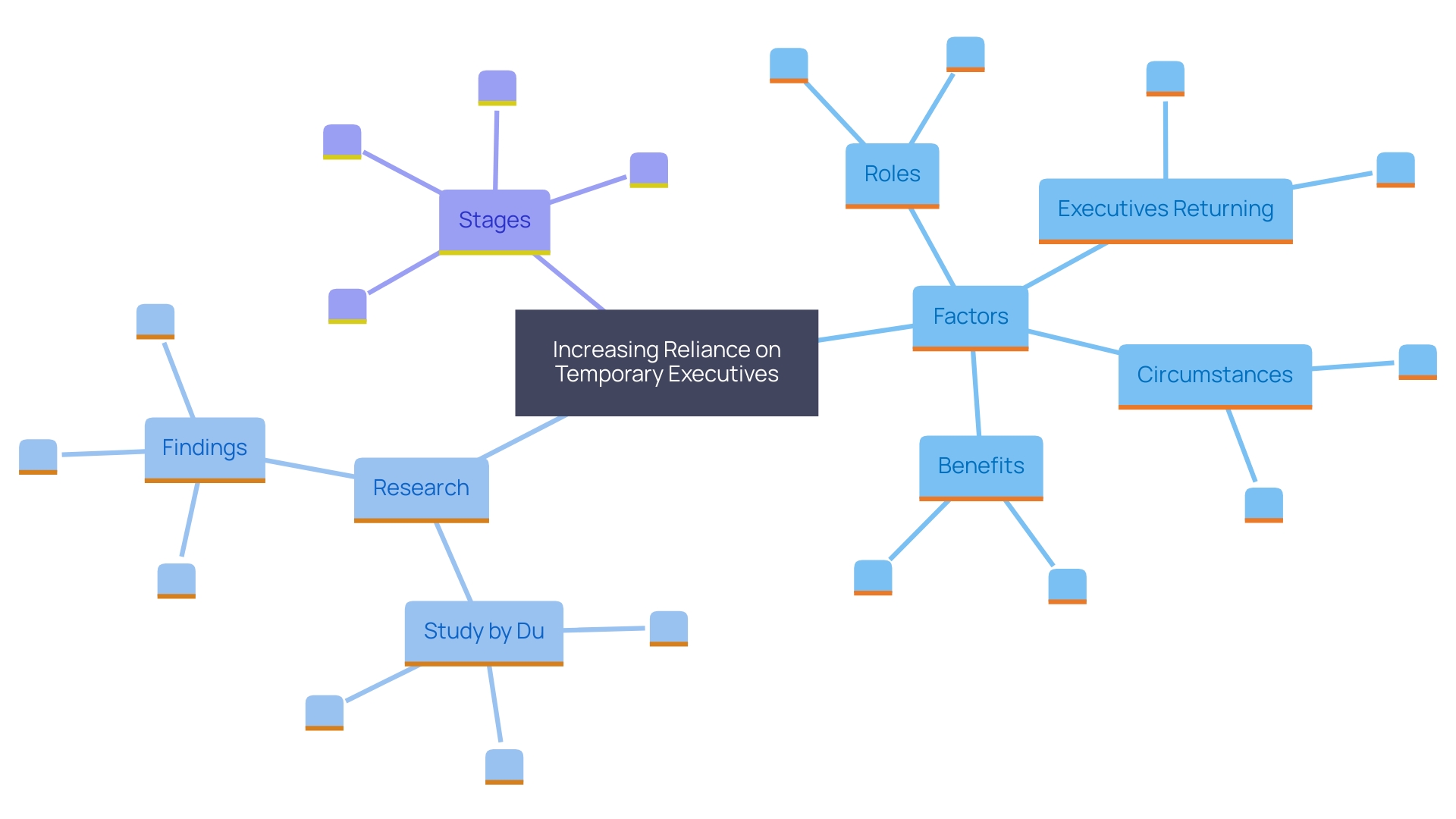
Key Roles and Responsibilities of Interim Managers
Interim leaders are essential resources during times of organizational change. They bring a systematic approach to assess current operations, identify improvement areas, and implement strategic initiatives to drive performance. Their expertise in data analysis allows them to gain insights into challenges, opportunities, and priorities, enabling informed decision-making. Engaging in key meetings and integrating within departments, they uncover internal opportunities and offer data-driven solutions, fostering successful change initiatives.
Interim leaders often guide teams and oversee projects, ensuring that business objectives are achieved while upholding operational excellence. This role is crucial for consistently delivering high-quality products and services, which leads to increased customer satisfaction, reduced costs, improved efficiency, innovation, and employee morale. 'Their ability to swiftly analyze situations and make informed decisions guides entities toward stability and growth.'.
Addressing the unique challenges faced by individuals in the middle tier, such as limited decision-making authority and role ambiguity, is essential. By redefining roles and supporting leaders, organizations can help them concentrate on strategic priorities and personnel leadership, reducing burnout and enhancing overall effectiveness. As the business environment changes, the role of temporary leaders becomes progressively vital in managing challenges and fostering organizational success.
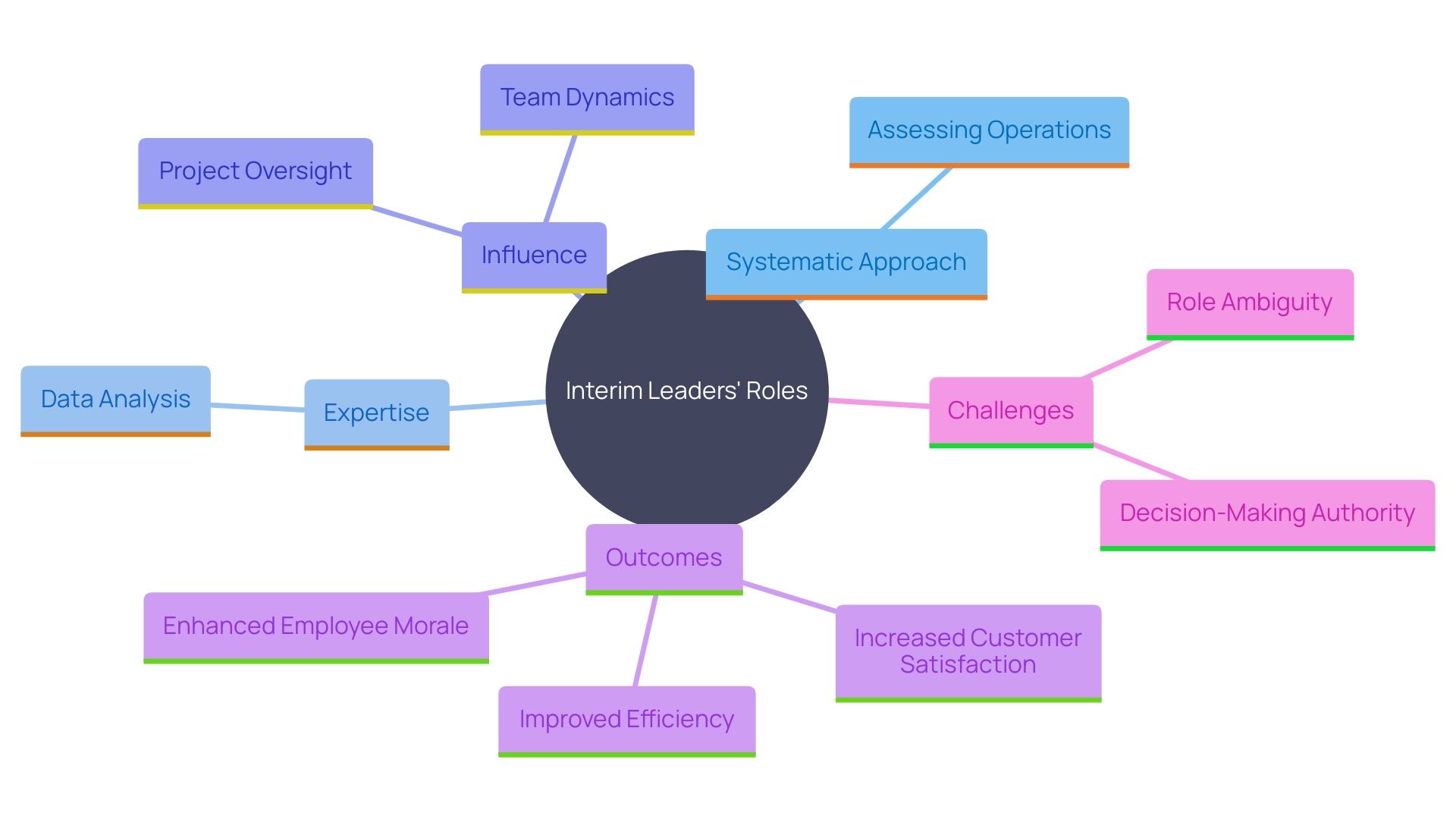
Benefits of Interim Management
The benefits of utilizing temporary management are extensive and impactful. Organizations gain immediate access to seasoned professionals who bring a wealth of experience and fresh perspectives, crucial for navigating today's dynamic market landscape. Interim leaders play a pivotal role in optimizing resource allocation, thus saving costs and enhancing operational efficiency. This approach eliminates the long-term commitments associated with permanent hires, providing the flexibility to adapt swiftly to market fluctuations.
Furthermore, temporary leaders frequently focus on fields where in-house knowledge might be insufficient, bridging important skill shortages and promoting strategic projects. For example, the Society for Human Resource Management emphasizes that providing professional development opportunities can enhance employee retention by 25%, highlighting the importance of specialized skills contributed by temporary managers. This flexibility is further enhanced by the ability to integrate seamlessly into existing teams, promoting a culture of innovation and adaptability.
In practice, healthcare facilities prioritizing clinical and cultural fit through transitional management have experienced a 30% reduction in turnover rates, demonstrating the effectiveness of this approach. Furthermore, companies that automate tasks and utilize temporary management report faster price growth and expect slower price growth in later years, due to the enhanced accuracy and decreased operational costs linked to these strategies.
Ultimately, the strategic use of temporary leaders allows entities to uphold high ethical standards, guarantee adherence to regulatory requirements, and cultivate strong relationships with stakeholders. This dynamic approach not only addresses immediate operational needs but also positions companies for sustained growth and success in an ever-changing business environment.
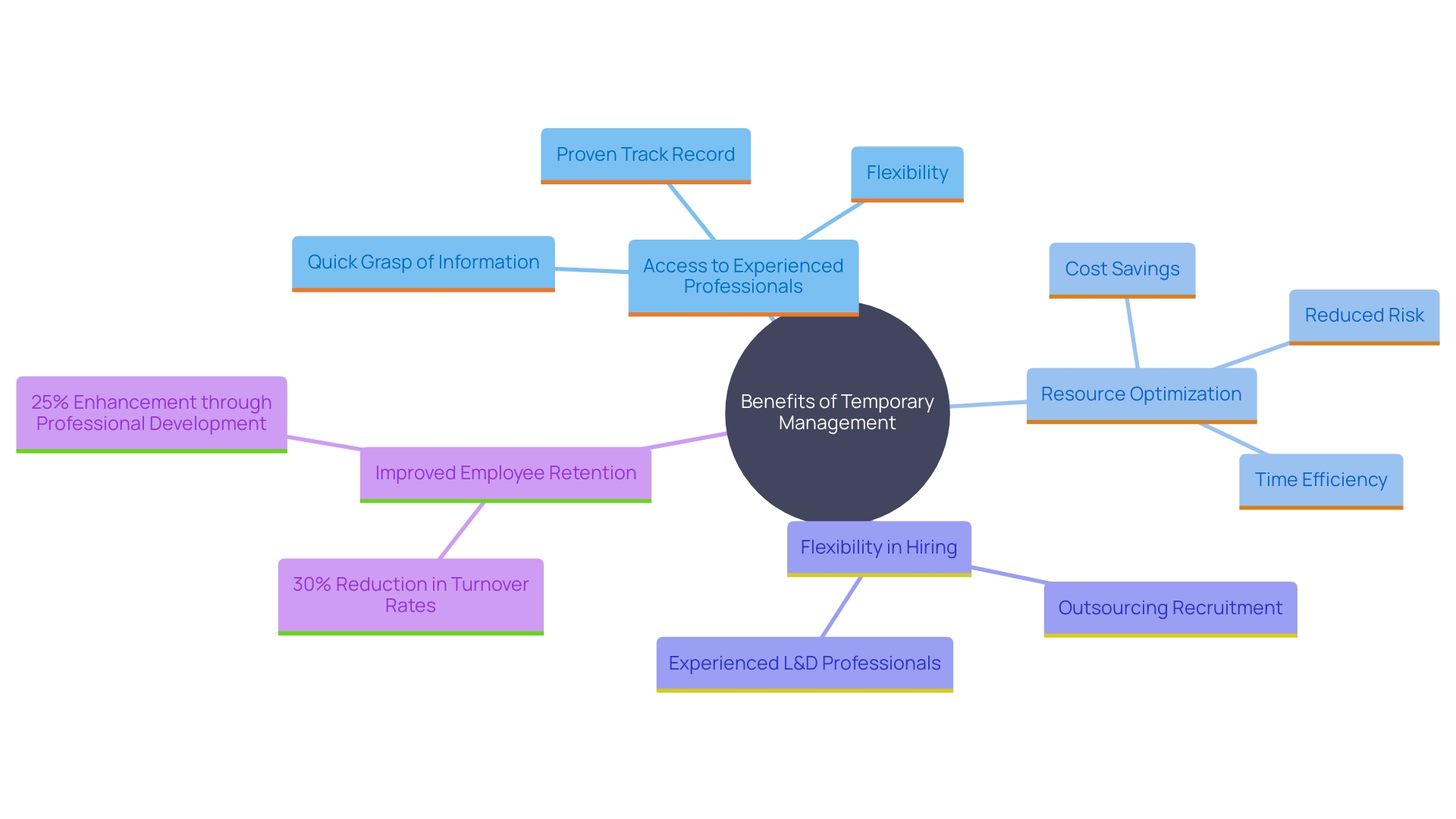
Situations Requiring Interim Management
Interim professionals become essential in various situations that demand specialized expertise and immediate action. For instance, leadership vacancies can create a void that disrupts routine operations. In such situations, temporary leaders step in to maintain continuity and drive strategic initiatives, ensuring that the organization stays on course. They are particularly invaluable during urgent project requirements, where their expertise can accelerate progress and meet tight deadlines.
Companies also seek temporary leaders during crises. Effective crisis management hinges on clear, timely communication and decisive action. As highlighted by the HSMAI Global Distribution Advisory Board, having reliable, multiple communication methods in place is crucial. Leaders must be prepared to relay information swiftly, even when traditional systems are down. For example, during a financial crisis at a hospitality business, a temporary supervisor can address issues such as inadequate staffing in housekeeping and miscommunication between leaders and corporate entities, which led to over 50 Out of Service rooms daily.
Additionally, temporary leaders provide specialized expertise during changes, such as restructuring or expansion. They ensure that these changes do not disrupt the organization's momentum. Organizations undergoing substantial transformation frequently discover that temporary leaders assist in preserving stability while fostering essential advancements. As stated in research, effective individuals recognize when to adopt a change agent mindset to foster growth and when to serve as a placeholder to maintain stability.
'The importance of temporary executives is further highlighted by the current trend of fewer firms keeping their former heads, choosing instead for new viewpoints.'. This trend emphasizes the role of temporary managers not only in addressing immediate voids but also in guiding entities through transitional phases with an emphasis on long-term success.
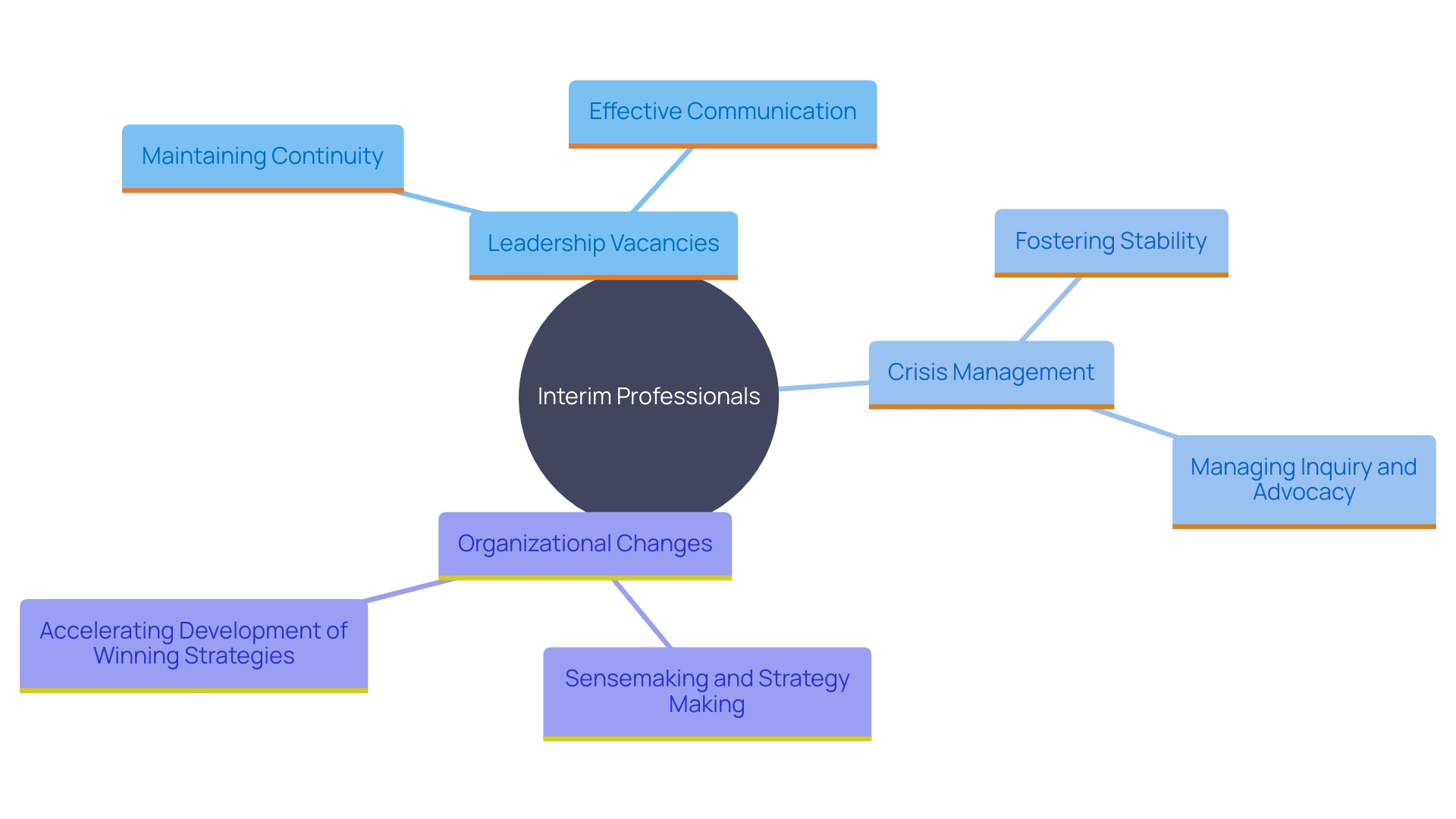
Strategic Advantages of Interim Management
Interim management provides strategic benefits that can elevate organizational performance. By integrating external expertise, companies can adopt innovative solutions and best practices that drive efficiency and growth. For instance, Strategic Solution Partners (SSP), a reputable hospitality solutions provider, has successfully implemented tailored strategies for nearly 1000 hotels, demonstrating their ability to find optimal solutions for diverse challenges.
Moreover, temporary leaders provide an objective viewpoint that can challenge the status quo, fostering a culture of continuous improvement. This objective viewpoint is crucial, especially when internal resistance to change can hinder innovation. As documented, entities with more external knowledge sources achieve better innovation performance.
In today's dynamic business environment, where middle-management layoffs are becoming more common, temporary managers play a pivotal role in maintaining organizational stability. For example, companies like Salesforce and Airbnb have streamlined their management structures to enhance efficiency. By reducing layers of control, these entities have created a more agile and responsive management system.
In conclusion, the strategic advantages of temporary management are clear. By leveraging external expertise and fostering a culture of continuous improvement, companies can navigate challenges effectively and drive sustained growth.
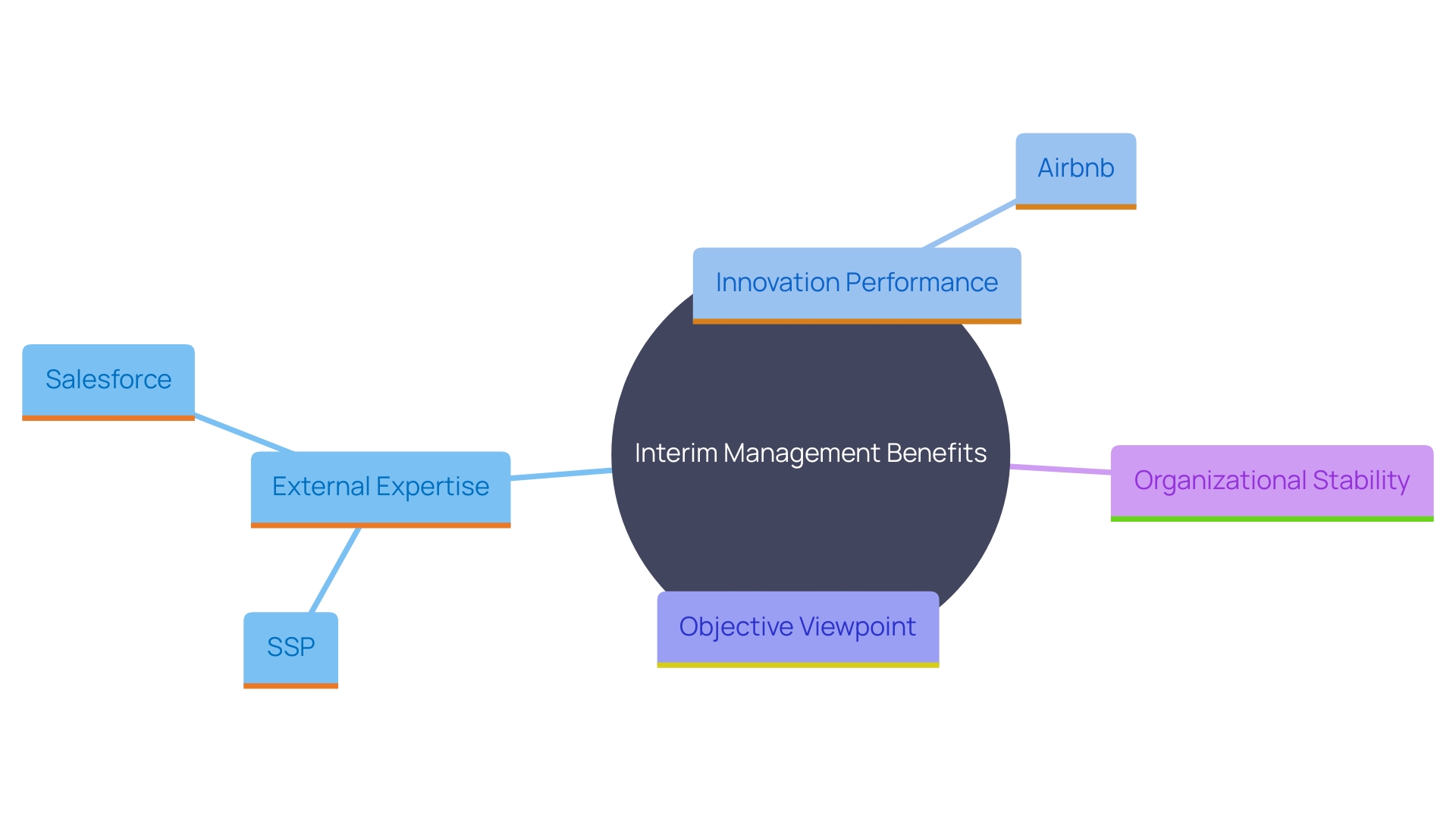
Trends in Interim Management for 2024
Emerging trends in interim management are reshaping the field as organizations adapt to new challenges and opportunities. The demand for digital transformation expertise is escalating, with companies seeking individuals who can navigate technological advancements effectively. According to a report by Accenture, 42% of C-suite leaders cite skills shortages as a significant hurdle, highlighting the critical need for digital proficiency.
Moreover, diversity and inclusion are becoming pivotal in temporary positions. Companies are increasingly recognizing the value of varied perspectives in decision-making processes. Initiatives to include neurodivergent team members and challenge age-related stereotypes are gaining momentum, as highlighted by recent HR Dive articles. Embracing diverse talent pools not only fosters innovation but also builds a more resilient workforce.
Flexibility in work arrangements is another significant trend. The COVID-19 pandemic has demonstrated that remote work is not only feasible but also beneficial. Almost half of workers have relocated or are considering relocation, according to a 2023 ADP Research Institute survey. This shift requires organizations to adapt their compliance and taxation strategies accordingly. Additionally, flexible work policies, such as part-time roles and contract work, are particularly appealing to seasoned professionals and those nearing retirement, offering a way to retain valuable talent.
'A focus on wellness in the workplace is also influencing temporary management.'. Companies are encouraging employees to prioritize work-life balance, with initiatives like the return of the lunch hour gaining traction. This trend, highlighted in IWG’s Future of Work 2024 report, underscores the importance of fostering a healthy work environment to maintain productivity and employee satisfaction.
In summary, the temporary management landscape is evolving with a strong emphasis on digital transformation, diversity and inclusion, flexible work arrangements, and wellness. These trends are not only addressing current challenges but also paving the way for a more dynamic and inclusive future.
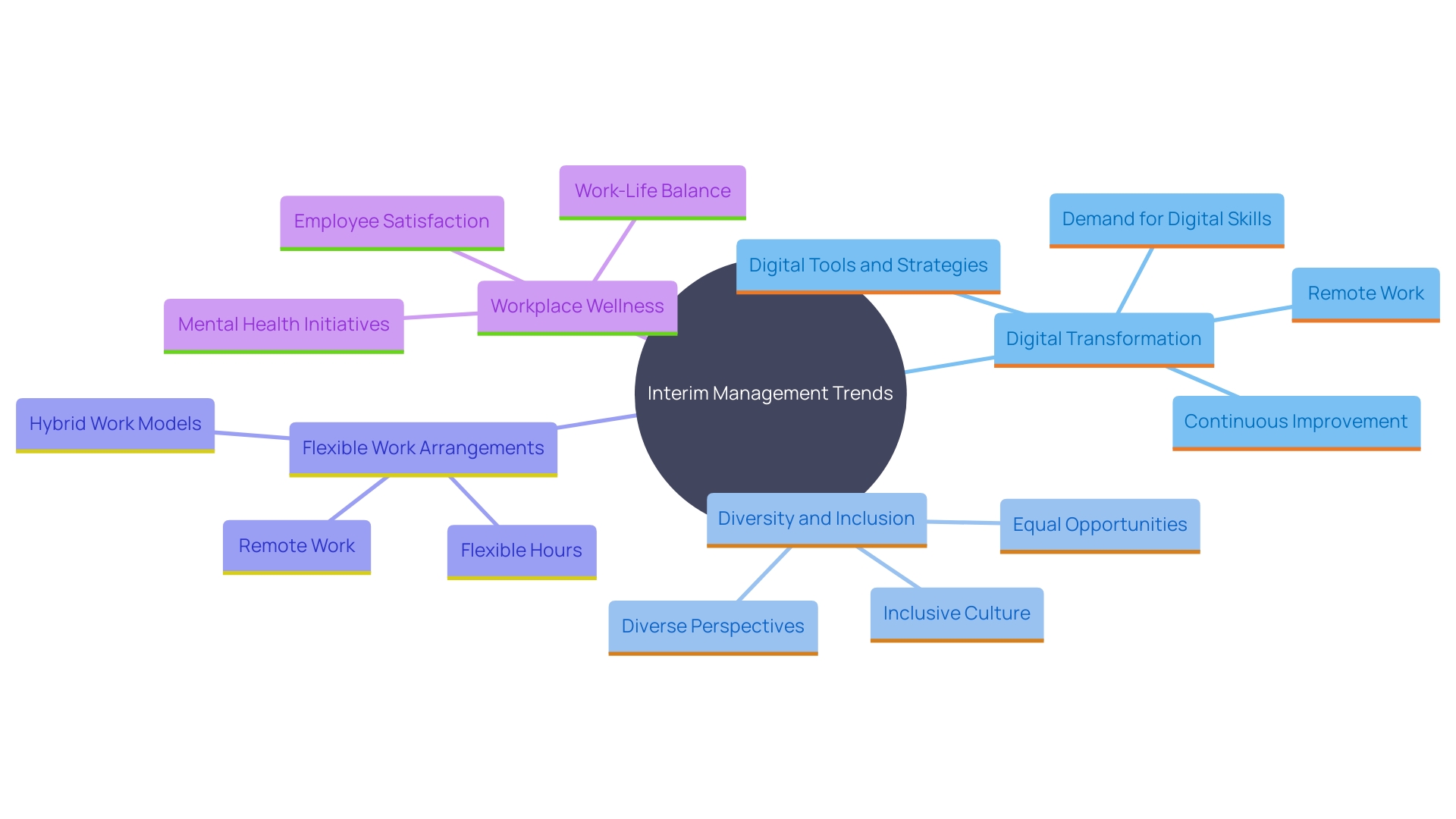
The Future of Interim Management
The trajectory of temporary management is increasingly promising as businesses adapt to this agile model to tackle challenges head-on. The constant requirement for flexibility in market dynamics, coupled with the benefit of accessing specialized skills, is set to maintain the demand for temporary leaders. More than 65% of organizations with high agile capacity outpace their counterparts in adapting to change, highlighting the transformative effect of temporary management. For example, companies like Stora Enso, which shifted from traditional paper production to a focus on renewable materials, demonstrate the strategic agility that temporary management can foster. As businesses navigate this evolving landscape, effectively leveraging interim leaders will be crucial. These professionals bring the expertise needed to drive sustainable growth and operational excellence, positioning organizations for long-term success.
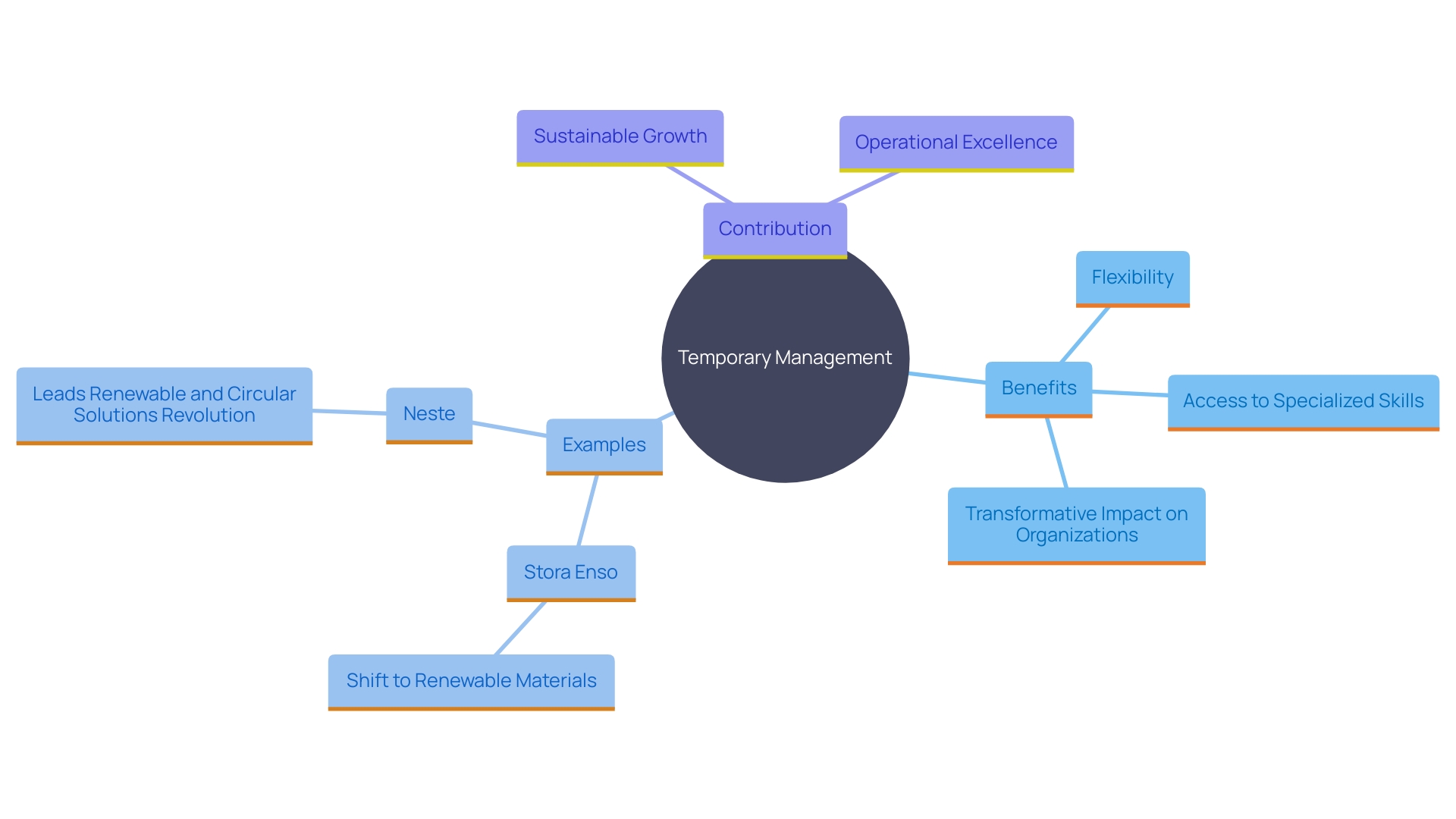
Conclusion
The rise of interim leadership reflects a strategic adaptation to the complexities of modern business environments. As organizations face unprecedented challenges, the demand for experienced interim leaders has surged, driven by factors such as technological advancements, market volatility, and the need for specialized expertise during critical transitions. Interim managers not only fill leadership gaps but also bring fresh perspectives that are essential for navigating turbulent times.
Their ability to integrate technology and foster innovation positions them as vital assets for organizations aiming to maintain stability while pursuing growth.
The benefits of interim management extend beyond immediate operational needs. These professionals enhance resource allocation, drive efficiency, and fill critical skill gaps, all while maintaining high ethical standards and compliance. This flexibility allows organizations to respond dynamically to market fluctuations without the long-term commitments associated with permanent hires.
Moreover, the strategic deployment of interim managers leads to improved employee retention and organizational resilience.
Looking ahead, the landscape of interim management is evolving, emphasizing digital transformation, diversity, and flexible work arrangements. These trends not only address current challenges but also pave the way for a more inclusive and adaptive future. As businesses increasingly recognize the value of interim leaders, leveraging their expertise will be crucial for sustained success and operational excellence in an ever-changing market.




